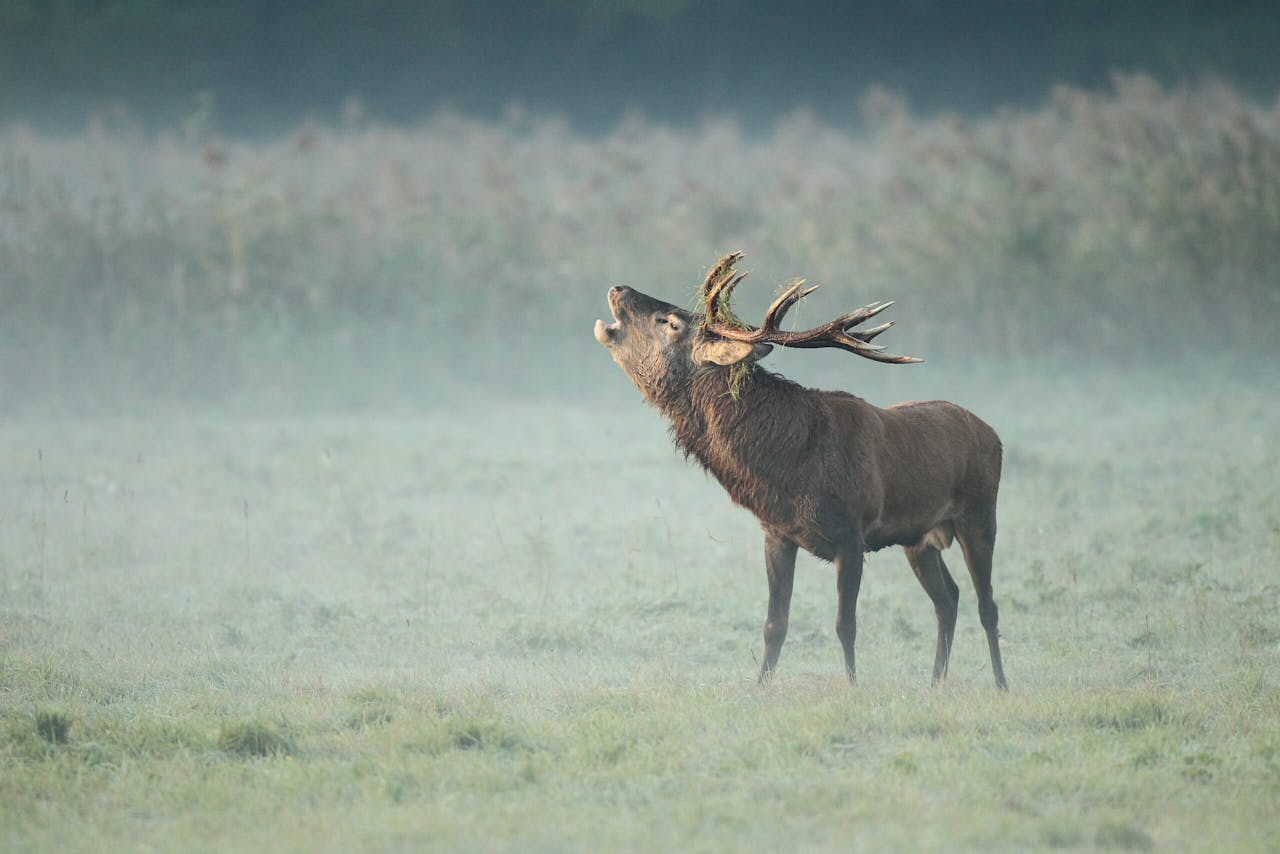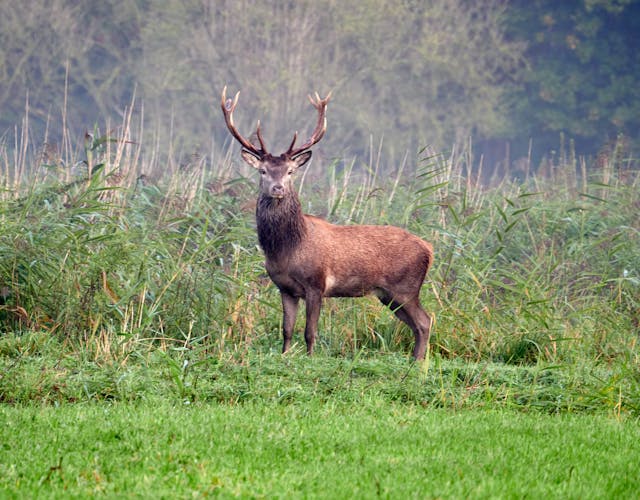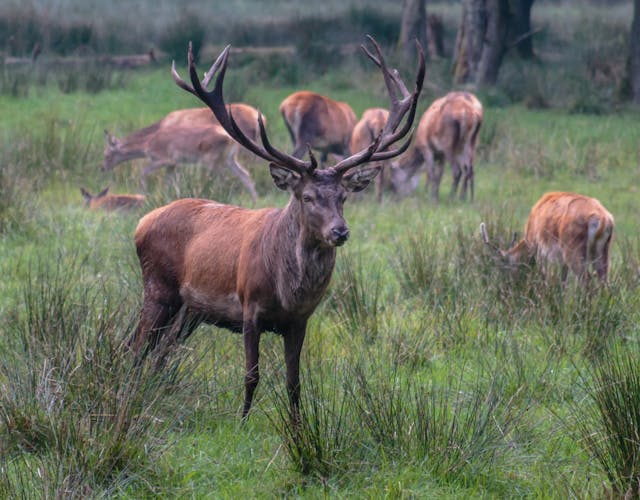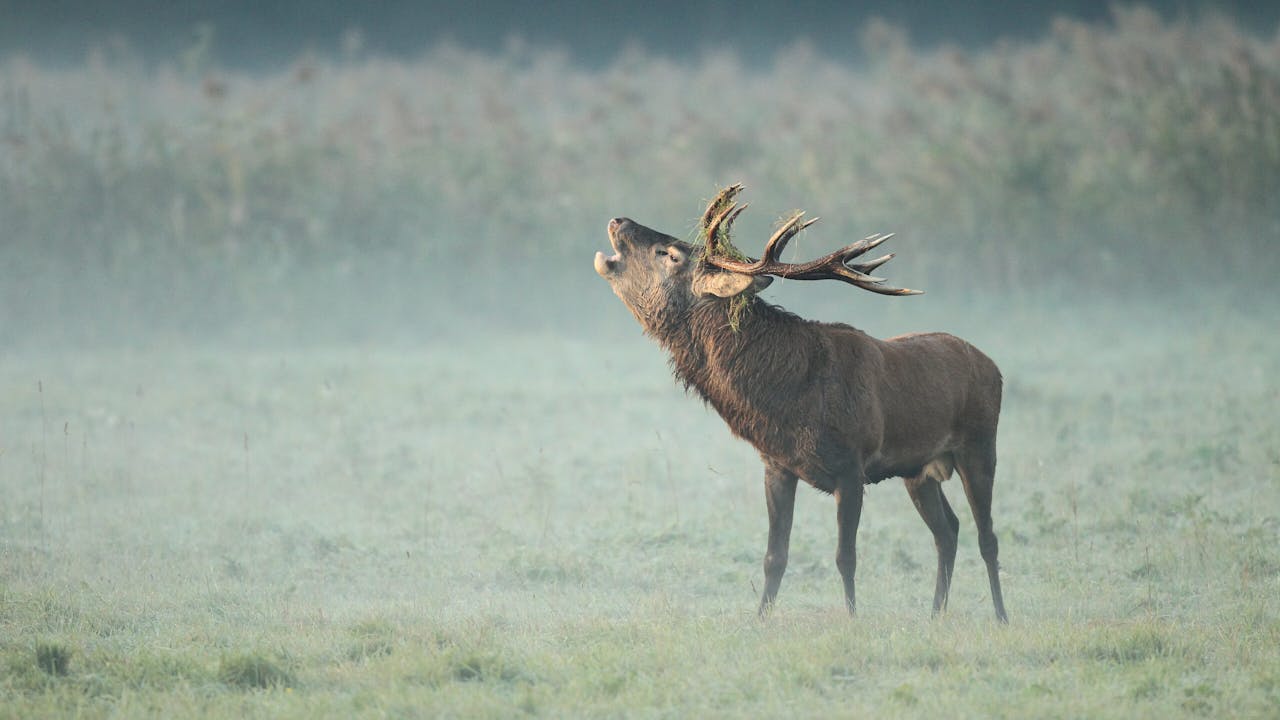Red deer
The red deer is the largest land-dwelling mammal in the Netherlands. After the moose, the red deer is even the largest deer in Europe. The species occurs from southern Spain to southern Sweden and from Great Britain to the Balkans. The red deer has lived for at least 350,000 years in almost all landscape types in the Netherlands and therefore rightly belongs in Dutch nature. The red deer is found in the wild in Flevoland and you can also encounter them in Natuurpark Lelystad.

About 40 red deer live in Natuurpark Lelystad: stags, does and their young from previous years. Their varied enclosure includes forest, reedbeds, ponds and meadows. The enclosure is completely fenced, but it is so large that the animals can exhibit natural behavior and have plenty of food, space and shelter. Visitors can observe the deer from behind the fence or from the path that runs through the enclosure.
Red deer are active all day long, but in areas with a lot of human activity they are mainly seen early in the morning and late in the evening. In the morning they usually move to the grasslands to graze.
Name: Red deer Species: Cervus elaphus Family: deer Range: Europe and Asia Height at withers: 1.45 m Weight: max. 200kg Diet: grass, herbs, shoots and bark Rutting season: september to october Antlers: 70 cm long, weighing up to 10 kg. Shed in early spring

King of the forest edge
Many people think that red deer are real forest animals. But that’s not quite right. Red deer do indeed reside in the forest, but traditionally also occur in dunes, on heathland, in river areas and even in swamps and peat bogs. The red deer prefers forest edges and open spaces in the landscape over dense forest. In dense forests, the antlers simply get in the way too much and the deer is less able to flee in case of danger.
Red deer are herbivores: they only eat plant food. They feed on grass, rushes, heather, tree bark, tubers, roots, fruits, seeds, buds, shoots and foliage of trees and shrubs such as willow, fir and holly and agricultural crops. In wooded areas the percentage of bark, buds, seeds and shoots is greater than in more open areas. However, grasses and herbs form the main part everywhere.

Impressive antlers
Only the male red deer bears characteristic and impressive antlers. On average, antlers are 70 centimeters long, but they can grow to more than 90 centimeters. The weight of the antlers can vary from four to ten kilograms and you can somewhat tell the age from the size and number of branches (ends) of the antlers.
The antlers become larger and heavier every year with more branches. Fully grown antlers usually have more than eight and a maximum of thirteen ends. In the event of a lack of food or other problems, antlers may not be larger the following year or may be irregularly shaped. And in males older than 12 years old, the antlers often become smaller again. Every year the deer sheds its old antlers and new, slightly larger antlers grow in their place.
